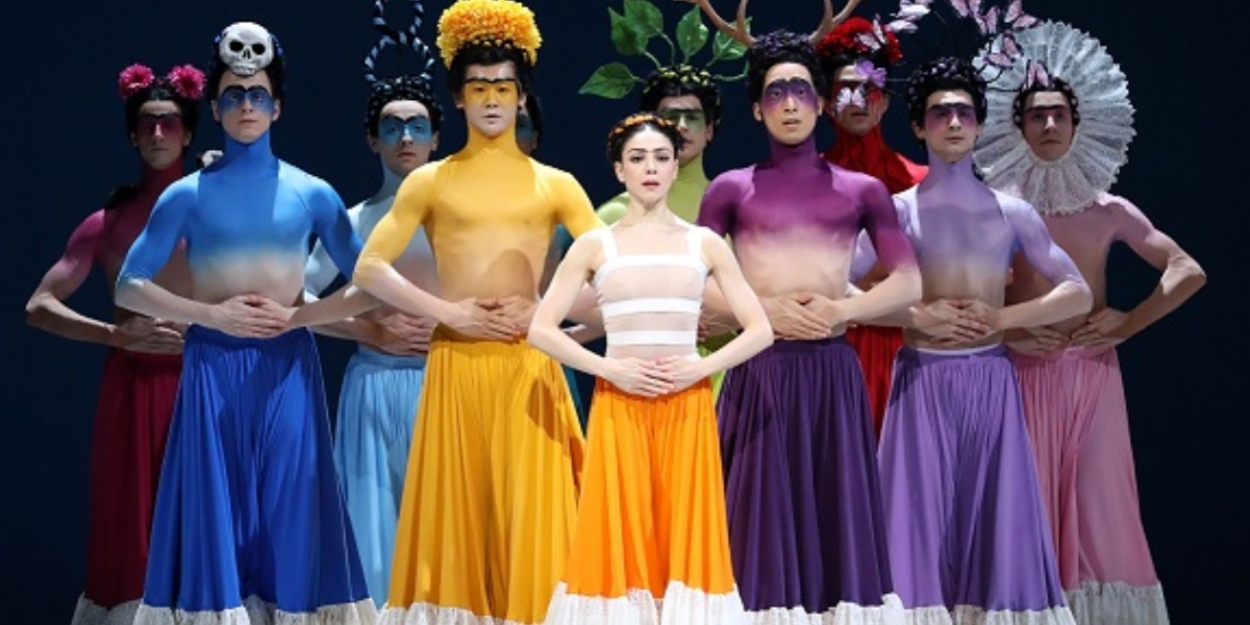Review: FRIDA at Ballet Arizona - A Bold and Breathtaking Portrait of an Artistic Icon
The production's run extended from February 13th through the 16th at Phoenix Symphony Hall.

Epic, bold, and elegant in design and execution, Ballet Arizona’s production of Annabelle Lopez Ochoa’s FRIDA is a sensory feast – impassioned, radiant, and breathtaking.
From February 13th through the 16th, the company is showcasing its wealth of talent with alternating stars in key roles…and unequivocally declaring its status as a premier interpreter of dance. This review covers the third performance.
Few artists have lived as vibrantly, painfully, and unapologetically as Frida Kahlo. Annabelle Lopez Ochoa’s FRIDA, performed by Ballet Arizona and staged by Luis Torres Lopez Ochoa’s repetiteur, distills that intensity into movement, shaping it into something as surreal, intimate, and searingly honest as one of Kahlo’s own paintings. Paired with Peter Salem’s evocative score, the ballet unfolds not as a straightforward biographical narrative but as a deeply visceral embodiment of Kahlo’s fractured yet unbreakable spirit.
Lopez Ochoa, a Belgian-Colombian choreographer, renowned for her interdisciplinary approach, paints Kahlo’s psyche through movement, allowing the audience to experience her physical pain, political fire, and tempestuous love for Diego Rivera. The choreography pulses with raw emotion, evoking both the rigidity of her suffering and the fluidity of her artistic genius.
Ballet Arizona’s interpretation is nothing short of a multi-sensory immersion into Kahlo’s universe. Salem’s mesmerizing score provides a lush, textured soundscape that fuses orchestral grandeur with traditional Mexican rhythms. The Phoenix Symphony orchestra amplifies the ballet’s emotional peaks and valleys, echoing the joyous defiance of Kahlo’s artistic breakthroughs and the somber reverberations of her health battles. The music breathes with the pulse of Mexico, grounding the ballet in cultural authenticity while remaining universally resonant.
But it is the visual language of FRIDA that delivers some of the production’s most striking elements. Dutch designer Dieuweke van Reij conjures Kahlo’s world through bold colors, intricate textiles, and surrealist imagery. The level of craftsmanship is staggering - headdresses and garments adorned with delicate embroidery, hues shifting through meticulous ombré dyeing techniques - each costume an extension of Kahlo’s essence.
Perhaps most stunning is the way Kahlo herself is represented, not as a singular figure but through sixteen incarnations, each portrayed by a different dancer. These variations reflect different facets of her existence: Frida in a white corset, as depicted in The Broken Column (1944); Frida in Victorian dress, a nod to The Two Fridas (1939); Frida as a male dancer, a deer, and even a tiny skeleton.
The set itself transforms into a living dreamscape, with 29 long, red fabric braids cascading from above - a visual motif drawn from Kahlo’s work. These braids symbolize the connections Kahlo often depicted: linking herself to her miscarriages, to her family, to Diego, to life and death. They are not just set pieces but integral elements of the choreography, binding and unbinding the movement onstage.
Leticia Endler (alternating with Isabella Seo) in the role of Frida, channels the artist’s defiant spirit with movement that shifts from angular and fractured to fluid and dreamlike, mirroring both Kahlo’s suffering and resilience. Through her portrayal, Frida emerges as a woman shaped by love, political passion, physical agony, and unyielding artistic vision. Opposite her, Helio Lima (alternating with Nayon Iovino) brings commanding presence to the role of Diego Rivera, capturing both his magnetic charisma and the turbulent, all-consuming nature of his relationship with Frida. Their duets pulse with tension - at times tender, at times volatile - reflecting the deep, complicated bond that fueled both artists' lives and work.
Surrounding them, the ensemble enriches this portrayal, embodying the external and internal forces that shaped Kahlo’s world - her relationships, her pain, and the dreamlike surrealism of her art. Figures drawn from her imagination take visceral form: The Wounded Deer materializes as a tragic symbol of fate, pierced yet unbowed. La Catrina, Mexico’s iconic skeletal dame, haunts the stage as a reminder of death’s ever-present embrace. Queen Leaf suggests rebirth and resilience, while The Bird - caught between confinement and flight - reflects Kahlo’s yearning to transcend physical suffering.
FRIDA does not simply depict its subject - it channels her. This is not a ballet of passive admiration but one of invocation, an unflinching confrontation with Kahlo’s unbreakable will and boundless creative fire. It is a work that leaves the audience shaken, exhilarated, and, above all, reminded of why Kahlo endures - not just as an artist, but as an icon of resilience.
More than a ballet, FRIDA is a visceral journey into the soul of an artist who turned pain into beauty and defiance into art. Ballet Arizona doesn’t just interpret Kahlo’s story—it inhabits it, delivering a performance as fearless and unrestrained as its subject. Like her paintings, this production lingers long after the curtain falls, a testament to the power of art to transcend suffering. With this production, Ballet Arizona reaffirms its place among the most innovative and evocative forces in contemporary dance.
FRIDA opened on February 13th with six scheduled performances through the 16th.
Ballet Arizona ~ https://balletaz.org/ ~ 2835 E. Washington Street, Phoenix, AZ ~ Box Office: 602-381-1096
Venue: Symphony Hall ~ https://tickets.phoenixsymphony.org/ ~ 75 N. 2nd Street, Phoenix, AZ ~ 602-262-6225
Photo Credit: Hans Gerritsen, Courtesy of Dutch National Ballet
Reader Reviews

Videos

